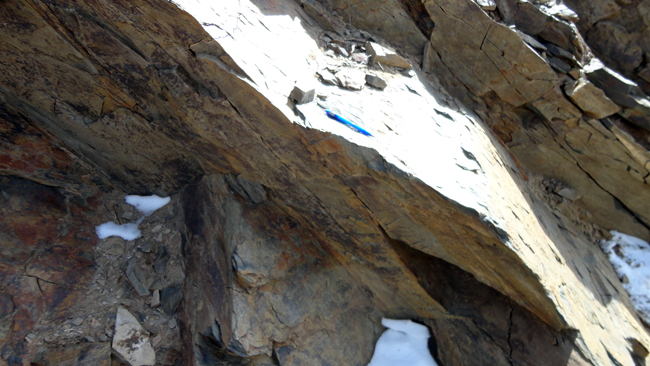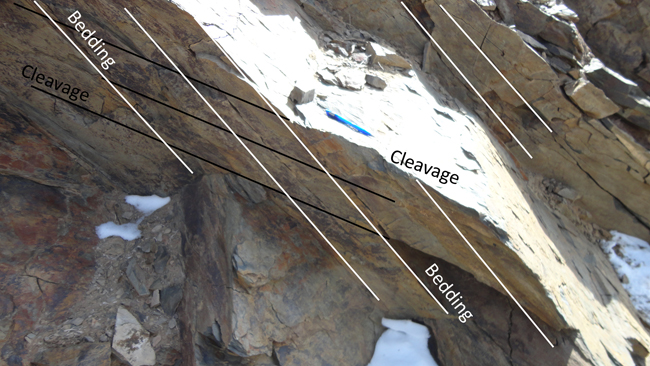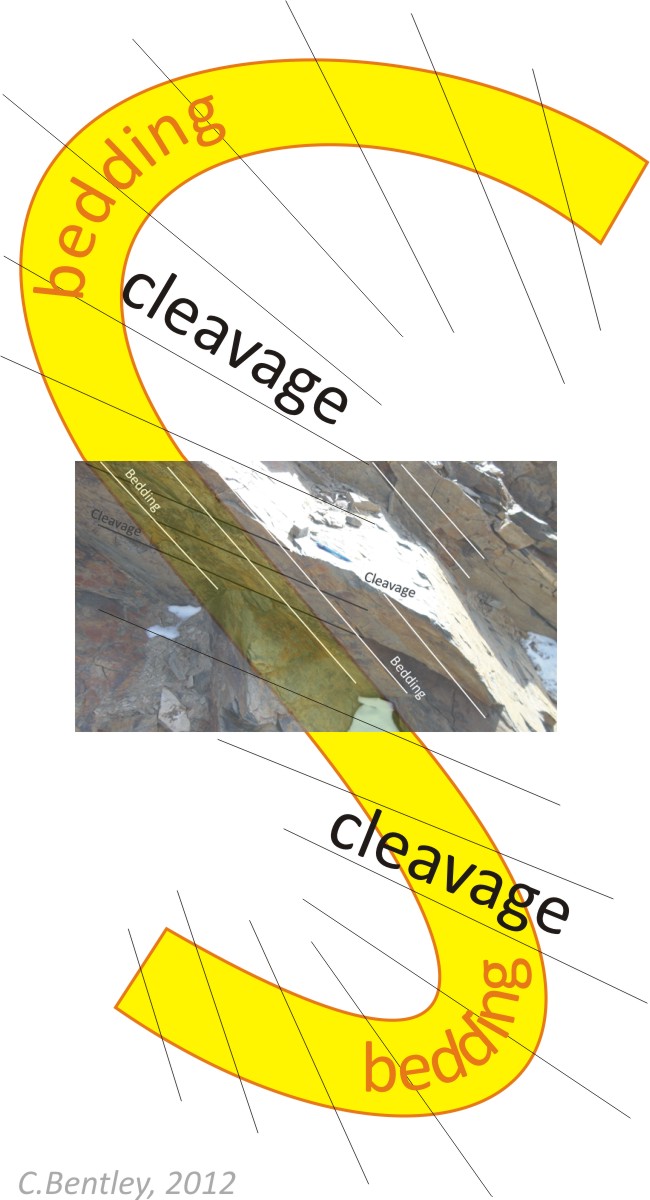19 March 2012
Overturned bedding in Poleta (?) Formation, White Mountains, California
Posted by Callan Bentley
After a roadside explanation just an hour and a half earlier on how the relationship between bedding and cleavage can reveal whether bedding is likely right-side-up or up-side-down, my students and I were walking up the road to the Ancient Bristlecone Pine Forest in the White Mountains of California, and I saw this outcrop that illustrated the concept perfectly:

The blue thing is a pen, to provide a sense of scale. Here it is annotated:

Both bedding and cleavage are dipping to the west, but bedding’s dip is steeper than the cleavage’s dip. These beds are likely up-side-down. Here’s the photo in context:

I think that’s one of the most satisfying aspects of teaching: Seeing an outcrop, talking about what it shows, and then expanding on it to say “but it could be different, and the implications would be different,” and then, a short time later, seeing the ‘different’ outcrops, and seeing the students successfully make the ‘different’ interpretation. We then checked our interpretation for searching around for geopetal structures, and sure enough, we found both cross-bedding and graded bedding that “younged” to the east, indicating the beds had been tectonically inverted. Sweet! I couldn’t have planned it any better – but it hadn’t been planned at all!
We hiked onward and upward with a sense of serendipitous satisfaction.


 Callan Bentley is Associate Professor of Geology at Piedmont Virginia Community College in Charlottesville, Virginia. He is a Fellow of the Geological Society of America. For his work on this blog, the National Association of Geoscience Teachers recognized him with the James Shea Award. He has also won the Outstanding Faculty Award from the State Council on Higher Education in Virginia, and the Biggs Award for Excellence in Geoscience Teaching from the Geoscience Education Division of the Geological Society of America. In previous years, Callan served as a contributing editor at EARTH magazine, President of the Geological Society of Washington and President the Geo2YC division of NAGT.
Callan Bentley is Associate Professor of Geology at Piedmont Virginia Community College in Charlottesville, Virginia. He is a Fellow of the Geological Society of America. For his work on this blog, the National Association of Geoscience Teachers recognized him with the James Shea Award. He has also won the Outstanding Faculty Award from the State Council on Higher Education in Virginia, and the Biggs Award for Excellence in Geoscience Teaching from the Geoscience Education Division of the Geological Society of America. In previous years, Callan served as a contributing editor at EARTH magazine, President of the Geological Society of Washington and President the Geo2YC division of NAGT.
[…] Those are apparently recumbent (axial plane appears horizontal on this outcrop): not so hard to see how some of the bedding here shows structural evidence of having been inverted. […]
[…] You know what that means: These beds must be overturned! […]